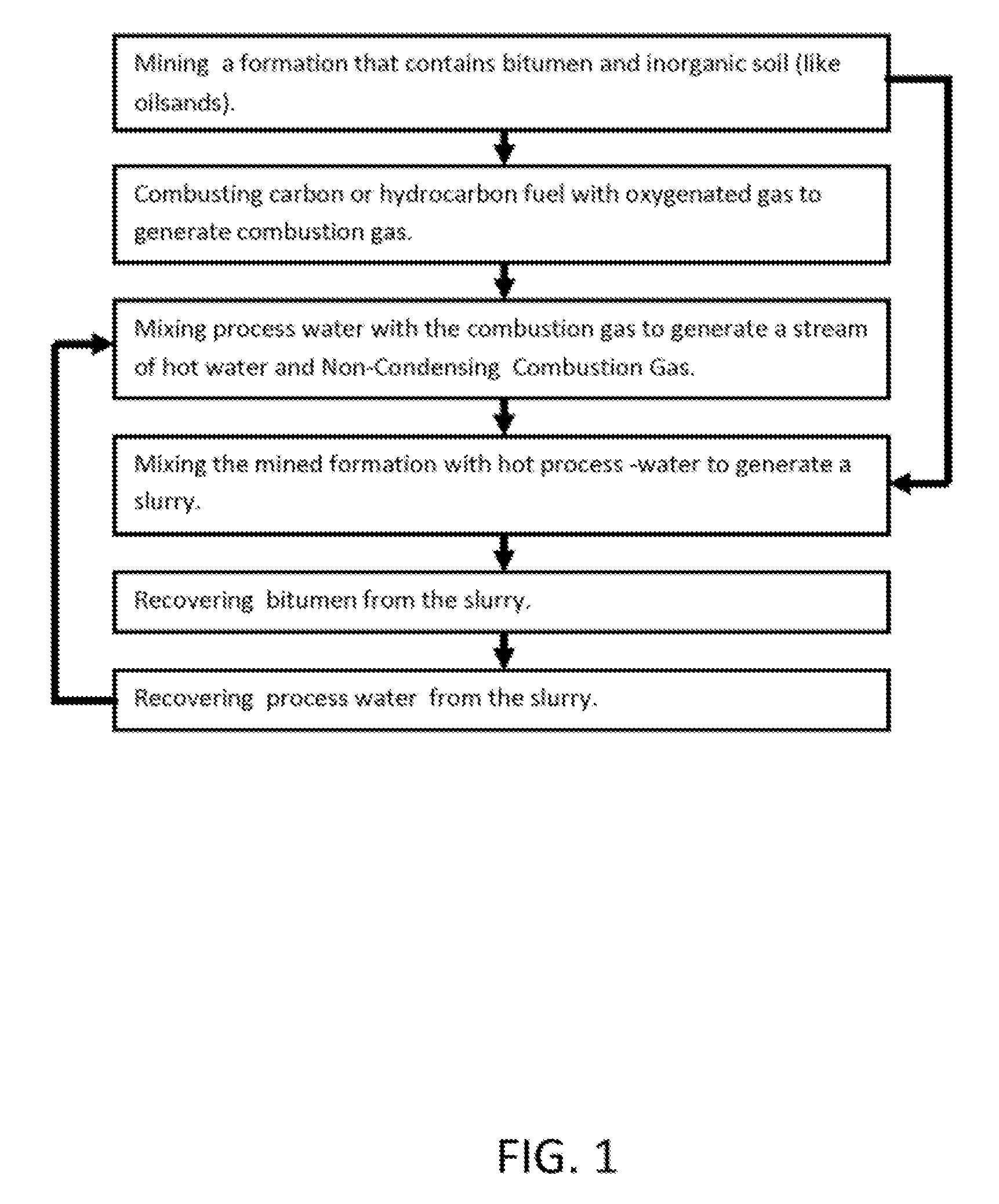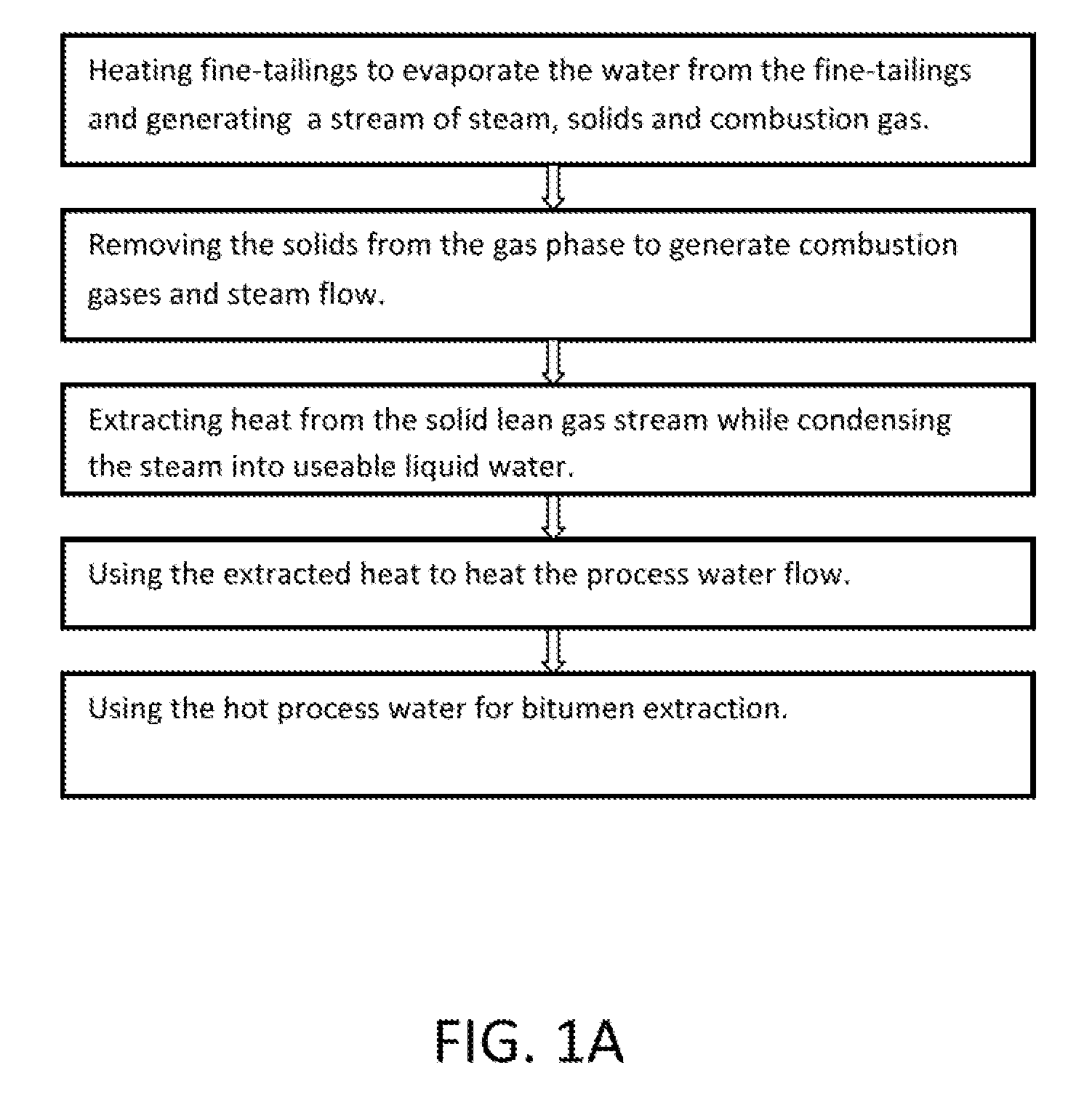System and method for minimizing the negative enviromental impact of the oilsands industry
a technology of oil and gas industry and ponds, which is applied in the direction of working up pitch/asphalt/bitumen by selective extraction, liquid hydrocarbon mixture production, solvent extraction, etc., can solve the problems of ponds becoming an increasingly significant environmental problem, devastating effects on the natural environment and settlements, and mft problems being left to future generations. , to achieve the effect of reducing the moisture content of the soil, and reducing the amount of settling
- Summary
- Abstract
- Description
- Claims
- Application Information
AI Technical Summary
Benefits of technology
Problems solved by technology
Method used
Image
Examples
example 2
[0163]The graph of FIG. 24 is a simulation of the system pressure's impact on the performance of the process as described in FIG. 2A. The variable in this process is the system pressure. The heated process water 9 is at a temperature of 90 C. The graph below is for the combustion of 1000 kg / hour of petcoke, the fuel, in air. The pressure is in bars. The conclusion that can be drawn from the simulation graph is that the optimal pressure for that particular system is in the range of 1.25 bar to 10 bar. Beyond that pressure of the recovery, the efficiency increases slightly, but the facility TIC (Total Installed Cost) and operation costs will increase dramatically due to the higher pressure.
example 3
[0164]The following results show the simulation of a hot water generation system, as described in FIG. 12. The system pressure is 10 bar. The simulation balance was done for 1 ton / hour of petcoke. Flow S-1 on the spreadsheet is stream 43 on FIG. 12 which is MFT with 23% solid concentration. Flow S-3 is flow 48 on FIG. 12 which is petcoke fuel. Flow S-2 is flow 49 on FIG. 12 which is the combustion gas (air). Flow S-6 is flow 47 on FIG. 12 which is the discharged gas and steam stream from the DCSG. The discharged gas during the simulation was at about 300 C. The discharged gas temperature could change the amount of MFT that is converted to hot water and solid waste per each ton of fuel (or per each ton of generated hot process water). Reducing the DCSG discharged gas temperature will increase the amount of MFT 43 consumed by the DCSG. Stream S-7 is stream 51 on FIG. 12. 90% of the MFT solids are removed through S-7 and the rest carries on to S-6. It is expected that the discharged so...
example 4
[0166]FIG. 25 shows the simulation results of a simulation of a hot water generation system, as described in FIG. 11A, with different system pressures. The simulation balance was done for 1 ton / hour of petcoke. To simplify the simulation and to create a comparison base, it was assumed that all the steam generated in the pressurized boiler was used for heating the process water from 20 C to 75 C with no heat losses. The results were compared to a “standard” coal fired boiler and natural gas fired boiler at closed conditions. In comparison, a Natural gas boiler is presented in AREA2 in FIG. 11. The CO2 product ratio is defined as the amount of product (hot water at 75 C) generated per 1 kg of generated CO2 was found to be as follows:
The ratio for “standard atmospheric coal” boiler was 33.9 [kg H2O / kgCO2]
The ratio for the system in FIG. 11A in different system pressures was as follows:
For a pressure of 103 kpa, the ratio was 34.15 [kg H2O / kgCO2]
For a pressure of 2 bar, the ratio was 37...
PUM
| Property | Measurement | Unit |
|---|---|---|
| pressure | aaaaa | aaaaa |
| pressure | aaaaa | aaaaa |
| pressure | aaaaa | aaaaa |
Abstract
Description
Claims
Application Information
 Login to View More
Login to View More - R&D
- Intellectual Property
- Life Sciences
- Materials
- Tech Scout
- Unparalleled Data Quality
- Higher Quality Content
- 60% Fewer Hallucinations
Browse by: Latest US Patents, China's latest patents, Technical Efficacy Thesaurus, Application Domain, Technology Topic, Popular Technical Reports.
© 2025 PatSnap. All rights reserved.Legal|Privacy policy|Modern Slavery Act Transparency Statement|Sitemap|About US| Contact US: help@patsnap.com



